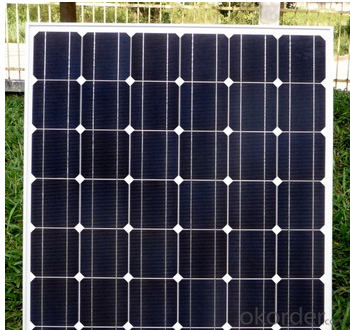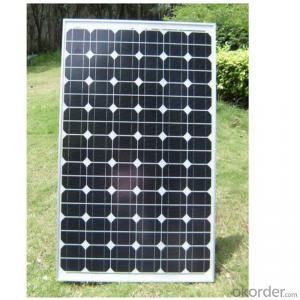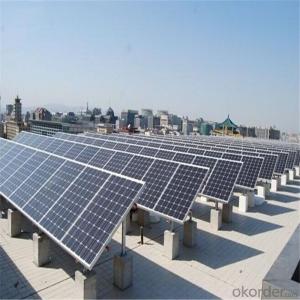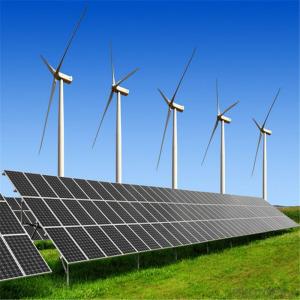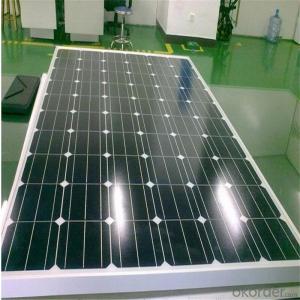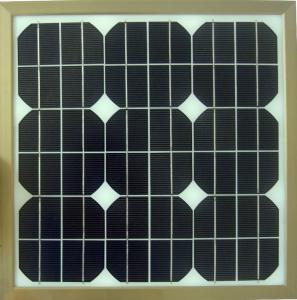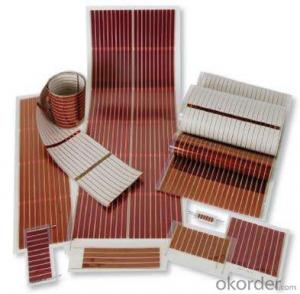Photovoltaic Solar Cells Poly Solar Cell 20W ICE-2
- Loading Port:
- China main port
- Payment Terms:
- TT OR LC
- Min Order Qty:
- 200 watt
- Supply Capability:
- 50000 watt/month
OKorder Service Pledge
OKorder Financial Service
You Might Also Like
Instruction
20W~25W output under standard conditions
Output Voltage 18V, suitable for 12V power system
Can fully charge up the internal 12V 7.2AH battery within 4~6 hours
Intelligent and high efficiency charge and discharge controller
1 day charging for 2 nights usage
2Watt Super Bright LED Light Bulb
with Mounting Frame and Stand for easy installation
Resistance to fluctuations of temperature, humidity and strong wind
Feature
1. High efficiency and High power.
2. Long-term electrical stability.
3. Lowest price and Fastest delivery.
4. Good quality and best service.
5. Bulk supply
6. Trusted Warranty
7. Big Sale
8. More than 25 years on the lifetime.
Images


Specification
Electrical Characteristic of Mono Solar Cells
Efficiency (%) | Pmpp (W) | Umpp (V) | Impp (A) | Uoc (V) | Isc (A) | FF (%) |
18.35 | 4.384 | 0.526 | 8.333 | 0.63 | 8.877 | 78.39% |
18.20 | 4.349 | 0.526 | 8.263 | 0.63 | 8.789 | 78.54% |
18.05 | 4.313 | 0.525 | 8.216 | 0.63 | 8.741 | 78.32% |
17.90 | 4.277 | 0.524 | 8.161 | 0.629 | 8.713 | 78.04% |
17.75 | 4.241 | 0.523 | 8.116 | 0.629 | 8.678 | 77.70% |
17.60 | 4.206 | 0.521 | 8.073 | 0.628 | 8.657 | 77.36% |
17.45 | 4.170 | 0.519 | 8.039 | 0.628 | 8.633 | 76.92% |
17.30 | 4.134 | 0.517 | 8.004 | 0.626 | 8.622 | 76.59% |
17.15 | 4.098 | 0.516 | 7.938 | 0.625 | 8.537 | 76.80% |
17.00 | 4.062 | 0.512 | 7.933 | 0.625 | 8.531 | 76.18% |
16.75 | 4.002 | 0.511 | 7.828 | 0.625 | 8.499 | 75.34% |
16.50 | 3.943 | 0.510 | 7.731 | 0.625 | 8.484 | 74.36% |
FAQ
We have organized several common questions for our clients,may help you sincerely:
1. What’s price per watt?
A: It’s depends on the quantity, delivery date and payment terms of the order. We can talk further about the detail price issue. Our products is high quality with lower price level.
2. Can you tell me the parameter of your solar cells?
We have different series of cells with different power output, both from c-si to a-si. Please take our specification sheet for your reference.
3. How do you pack your products?
We have rich experience on how to pack the panels to make sure the safety on shipment when it arrives at the destination.
4. Can you do OEM for us?
Yes, we can.
5. How long can we receive the product after purchase?
In the purchase of product within three working days, We will arrange the factory delivery as soon as possible. The perfect time of receiving is related to the state and position of customers. Commonly 7 to 10 working days can be served.
A: Of course, you will be offered a good discount for big amount.
- Q: How do solar cells perform in high-pollution areas?
- Solar cells perform less efficiently in high-pollution areas due to the reduced amount of sunlight reaching the cells. The presence of pollutants in the air, such as smog or dust, can block and scatter sunlight, thereby decreasing the overall energy output of the solar cells. Regular cleaning and maintenance of the panels can help mitigate the impact of pollution on their performance.
- Q: What are thin-film solar cells?
- Thin-film solar cells are a type of solar cell that utilize thin layers of semiconducting materials to convert sunlight into electricity. These cells are made by depositing thin films of photovoltaic materials onto a substrate, which allows for more flexible and lightweight solar panels compared to traditional silicon-based ones.
- Q: Can solar cells be used on satellites?
- Yes, solar cells can be used on satellites. In fact, they are commonly used to power satellites in space by converting sunlight into electricity.
- Q: Can solar cells be used to power large-scale industrial facilities?
- Yes, solar cells can indeed be used to power large-scale industrial facilities. With advancements in solar technology and the availability of more efficient and cost-effective solar panels, industrial facilities can harness the power of the sun to meet their energy needs. Large-scale solar installations, such as solar farms or rooftop arrays, can generate substantial amounts of electricity, making them a viable option for powering industrial operations. Additionally, integrating solar power into industrial facilities can reduce greenhouse gas emissions, lower energy costs, and provide a more sustainable and reliable energy source.
- Q: Can solar cells be used in agricultural settings?
- Yes, solar cells can be used in agricultural settings. They can be used to power irrigation systems, electric fences, and other equipment used in farming. Additionally, solar panels can be installed on agricultural buildings or land to generate electricity, reducing the reliance on grid power.
- Q: I bought a new poly solar cells, and the test result of the conversion efficiency is 16.8%, is it lower than usual?
- If the solar cells have been used for over 5 years or more, the conversion efficiency may become lower.
- Q: Can solar cells power an entire house?
- Yes, solar cells have the ability to power an entire house. With advancements in technology, larger and more efficient solar panels are being developed, which can generate enough electricity to meet the energy needs of a typical household. However, the capacity of solar cells to power an entire house also depends on factors such as the size of the house, the number of solar panels installed, the amount of sunlight available in the area, and the energy consumption habits of the residents.
- Q: How do solar cells handle electromagnetic interference?
- Solar cells are designed to handle electromagnetic interference by incorporating shielding techniques such as grounded enclosures and filtering components. This helps to minimize the impact of electromagnetic waves and ensure uninterrupted power generation.
- Q: Can solar cells be used for air conditioning?
- Yes, solar cells can be used for air conditioning. Solar-powered air conditioning systems utilize solar energy to power the cooling process, making them more energy-efficient and environmentally friendly compared to traditional AC systems.
- Q: Can solar cells be used in cold climates?
- Yes, solar cells can be used in cold climates. While they may not perform at their maximum efficiency in extremely cold temperatures, modern solar cell technology has advanced to be able to generate electricity even in low light and cold conditions. Additionally, snow on solar panels can be easily cleared to ensure proper functioning.
Send your message to us
Photovoltaic Solar Cells Poly Solar Cell 20W ICE-2
- Loading Port:
- China main port
- Payment Terms:
- TT OR LC
- Min Order Qty:
- 200 watt
- Supply Capability:
- 50000 watt/month
OKorder Service Pledge
OKorder Financial Service
Similar products
Hot products
Hot Searches
Related keywords


